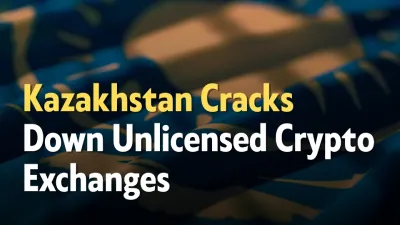简体中文
繁體中文
English
Pусский
日本語
ภาษาไทย
Tiếng Việt
Bahasa Indonesia
Español
हिन्दी
Filippiiniläinen
Français
Deutsch
Português
Türkçe
한국어
العربية
What Are Stablecoins? Decrypting the Anchor in Cryptocurrency Volatility
Abstract:What are stablecoins? Why do we need stablecoins? This article will explain it all!

In the dynamic world of cryptocurrencies, where values can soar to extraordinary heights or plunge unexpectedly, the concept of stability seems like an elusive dream. However, within this volatile landscape, a category of digital assets known as stablecoins has emerged, providing a reliable anchor amidst the market turbulence.
At its core, a stablecoin is a type of cryptocurrency designed to maintain a stable value by pegging it to another asset, typically a fiat currency like the US dollar. This pegging is achieved through various mechanisms, ensuring that the value of the stablecoin remains steady, mirroring the price of the chosen underlying asset.
Why the need for stablecoins, you might wonder? Well, the inherent volatility of traditional cryptocurrencies like Bitcoin and Ethereum has presented challenges for broader adoption and everyday use. Imagine purchasing a cup of coffee with a cryptocurrency that might significantly increase or decrease in value within minutes—this unpredictability impedes its practicality as a medium of exchange.
Stablecoins address this issue by offering stability, acting as a bridge between the crypto realm and the stability of fiat currencies. They allow users to retain the advantages of blockchain technology—such as fast and borderless transactions—while minimizing exposure to price fluctuations.

There are different types of stablecoins, broadly categorized into three main groups based on their underlying mechanisms:
Fiat-Collateralized Stablecoins: These are backed by fiat currencies, maintaining a 1:1 ratio. For instance, for every unit of a fiat-collateralized stablecoin issued, theres an equivalent amount of fiat currency held in reserve. Tether (USDT), USD Coin (USDC), and TrueUSD (TUSD) are prominent examples in this category.
Crypto-Collateralized Stablecoins: These stablecoins are backed by other cryptocurrencies held as collateral. The value is maintained by over-collateralizing the assets, ensuring that the value of the collateral remains higher than the stablecoin issued. Dai, governed by MakerDAO, is a leading example in this domain.
Algorithmic Stablecoins: This type employs smart contracts and algorithms to manage the stablecoins supply in response to market demand, without direct collateral backing. The aim is to stabilize the price through various mechanisms like expanding or contracting the supply. Basis and Terra are among the notable projects exploring this approach.
The adoption of stablecoins has surged across various sectors within the crypto space. They serve as a reliable medium for traders to hedge against market volatility, allowing them to swiftly move funds in and out of volatile cryptocurrencies. Moreover, stablecoins facilitate faster and cheaper cross-border transactions compared to traditional banking systems, making them an attractive choice for remittances and international transfers.
Regulatory bodies worldwide have also taken a keen interest in stablecoins due to their potential impact on the financial system. Concerns regarding transparency, reserve backing, and compliance with existing regulations have prompted discussions and calls for oversight in the issuance and usage of stablecoins.
In conclusion, stablecoins represent a crucial innovation within the cryptocurrency sphere, offering stability in an otherwise unpredictable landscape. Their versatility and potential to revolutionize payment systems have garnered attention from both individuals and institutions, paving the way for a more seamless integration of cryptocurrencies into everyday financial transactions. As the crypto market continues to evolve, stablecoins are poised to play an increasingly integral role in shaping its future.

Disclaimer:
The views in this article only represent the author's personal views, and do not constitute investment advice on this platform. This platform does not guarantee the accuracy, completeness and timeliness of the information in the article, and will not be liable for any loss caused by the use of or reliance on the information in the article.
Read more

Global Stablecoins Reshape Money Flow as Regulation Tightens
Stablecoins expand beyond dollar pegs to euro, yuan, and algorithmic variants, with regulatory acts like GENIUS shaping a new era of digital liquidity.

UK Opens Crypto ETNs to Retail Investors
The UK's financial watchdog has lifted a 4-year ban, allowing retail investors to trade crypto exchange-traded notes (ETNs) on regulated exchanges.

Kazakhstan Cracks Down Unlicensed Crypto Exchanges
Kazakhstan intensifies its crypto regulation, shutting down over 130 illegal exchanges and seizing nearly $17M to combat money laundering and protect consumers.

SEC halts QMMM trading after 959% surge
US regulators paused QMMM shares until Oct. 10 over suspected social‑media stock promotion after a crypto treasury plan fueled a 959% rally.
WikiFX Broker
Latest News
BASF CEO: EU CO₂ Trading Is A "Destruction Mechanism" For European Industry
WikiEXPO Dubai 2025 “Welcome Party” Kicks Off Tonight!
Capital.com Review 2025: Is It a Scam? Official License Verification and Real User Ratings
From Zero Spread to Zero Balance: How Unlicensed Platforms Drain Investors Step by Step
Currency Calculator



